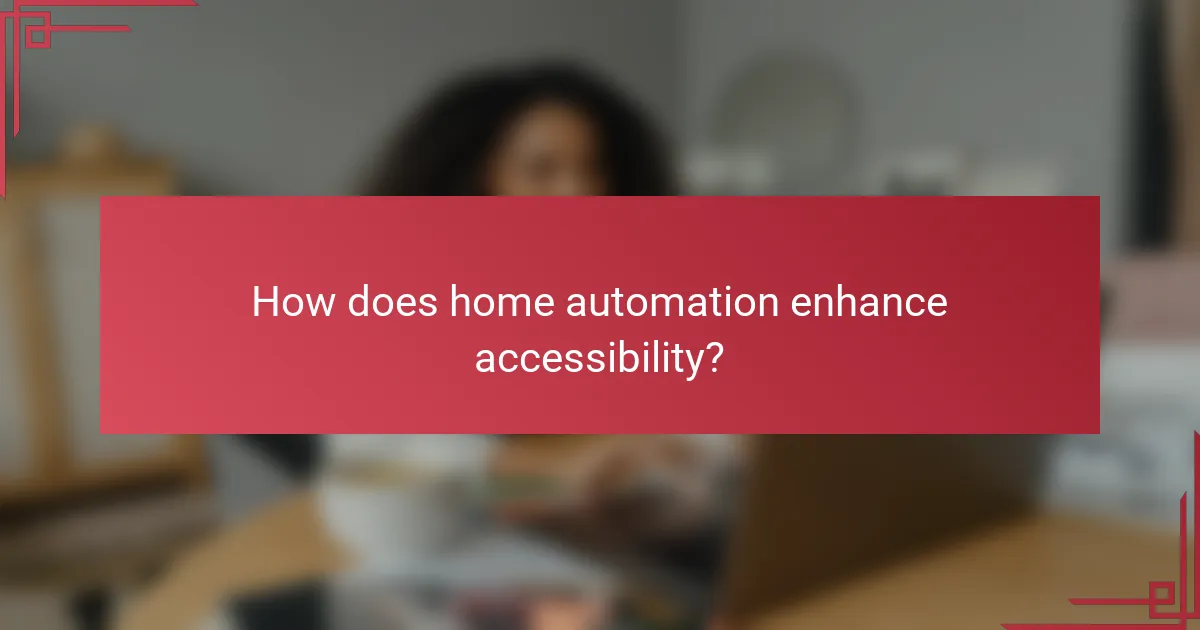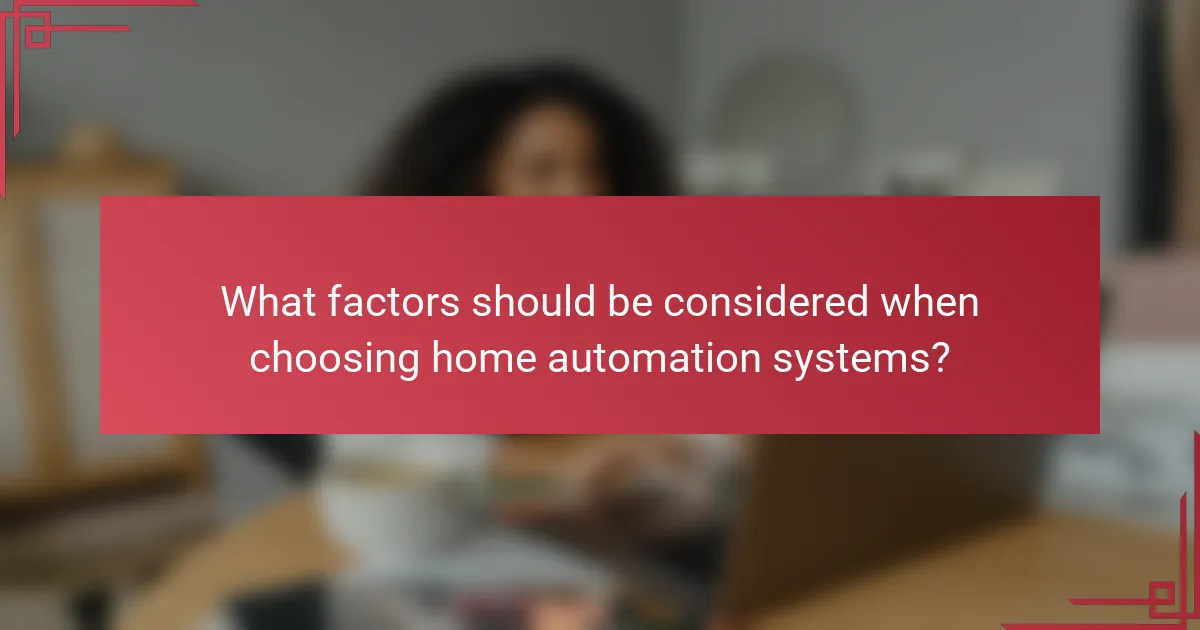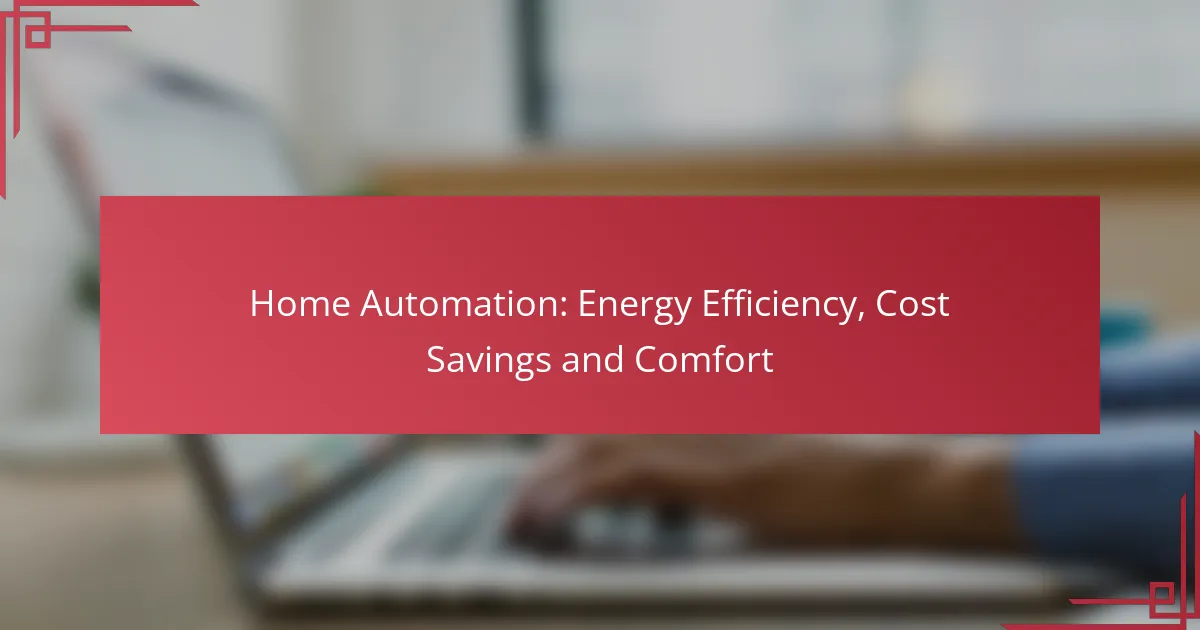Home automation technology offers a range of health benefits, such as improved air quality and enhanced medication management, which can greatly support individuals with specific health concerns. Additionally, it enhances accessibility by enabling users to control their environment effortlessly, promoting independence for those with mobility challenges. With various support options available, including installation services and online resources, users can easily navigate their home automation systems for an optimal experience.

What are the health benefits of home automation in Ireland?
Home automation in Ireland offers several health benefits, including improved air quality, better sleep, reduced stress, increased physical activity, and enhanced medication management. These features can significantly enhance the well-being of individuals, particularly those with specific health concerns or mobility issues.
Improved air quality monitoring
Home automation systems can monitor indoor air quality by tracking pollutants, humidity, and temperature. Devices like smart air purifiers and sensors can alert homeowners to poor air conditions, prompting timely action to improve air quality.
In Ireland, where dampness can be an issue, maintaining optimal humidity levels is crucial. Automated systems can help regulate humidity, reducing the risk of mold and respiratory issues.
Enhanced sleep quality
Smart home devices can contribute to better sleep quality by controlling lighting and temperature. For instance, automated blackout curtains and smart thermostats can create an ideal sleep environment, promoting restful nights.
Incorporating sleep tracking technology can also provide insights into sleep patterns, allowing users to make informed adjustments for improved rest. This is particularly beneficial for those struggling with insomnia or irregular sleep schedules.
Reduced stress levels
Home automation can significantly reduce daily stress by streamlining tasks and enhancing convenience. Automated lighting, temperature control, and even robotic vacuum cleaners can free up time and mental energy.
For individuals with mobility challenges, these systems can alleviate the stress of managing household chores, allowing for a more relaxed living environment. Simple voice commands can control multiple devices, making life easier and more manageable.
Increased physical activity
Smart home technology can encourage physical activity by integrating fitness trackers and home exercise equipment. Automated reminders to move or engage in physical activity can help users maintain a healthy lifestyle.
Additionally, features like smart mirrors that offer workout routines can motivate individuals to stay active at home, especially in regions with unpredictable weather like Ireland.
Better medication management
Home automation can assist with medication management through smart pill dispensers and reminders. These devices ensure that individuals take their medications on time, reducing the risk of missed doses.
In Ireland, where healthcare access can vary, automated systems can provide peace of mind for caregivers and patients alike, ensuring adherence to treatment plans and improving overall health outcomes.

How does home automation enhance accessibility?
Home automation significantly enhances accessibility by allowing individuals with varying needs to control their environment easily and independently. Through smart devices, users can manage lighting, temperature, and security without physical effort, making daily tasks more manageable.
Voice-activated controls
Voice-activated controls enable users to operate devices hands-free, which is particularly beneficial for those with mobility impairments. Systems like Amazon Alexa or Google Assistant allow commands for lights, thermostats, and entertainment systems, providing convenience and ease of use.
When setting up voice controls, ensure that the device is placed in a location where it can easily hear commands. Regularly update the software to improve responsiveness and add new features.
Remote monitoring for elderly care
Remote monitoring systems provide caregivers with the ability to check in on elderly family members through smart home devices. These systems can alert caregivers to unusual activity patterns, such as lack of movement or missed medication schedules, enhancing safety and peace of mind.
Consider using devices that offer real-time alerts and video monitoring capabilities. This can help caregivers respond promptly to emergencies, ensuring that elderly individuals receive the support they need while maintaining their independence.
Customizable settings for disabilities
Customizable settings in home automation systems allow users with disabilities to tailor their environment to their specific needs. For instance, individuals can adjust lighting brightness, set temperature preferences, or create routines that align with their daily activities.
When implementing customizable settings, involve users in the setup process to ensure their preferences are accurately reflected. Regularly review and adjust these settings as needs change, ensuring ongoing accessibility and comfort.

What support options are available for home automation users?
Home automation users have access to various support options, including local installation services, online customer support platforms, and community forums. These resources can help users effectively set up and troubleshoot their systems, ensuring a smoother experience.
Local installation services in Dublin
In Dublin, several companies specialize in home automation installation services. These professionals can assist with integrating smart devices, ensuring compatibility, and optimizing system performance. Hiring local experts can save time and reduce the complexity of setup.
When selecting a service, consider checking customer reviews and asking for quotes from multiple providers. Typical installation costs can range from a few hundred to several thousand euros, depending on the complexity of the system.
Online customer support platforms
Many home automation brands offer online customer support platforms, including live chat, email assistance, and extensive knowledge bases. These resources are valuable for troubleshooting issues and getting quick answers to common questions.
Utilizing these platforms can often lead to faster resolutions compared to traditional support methods. Look for brands that provide 24/7 support or have a robust FAQ section to help you find solutions at any time.
Community forums for troubleshooting
Community forums are excellent resources for home automation users seeking advice and troubleshooting tips. Platforms like Reddit and specialized tech forums allow users to share experiences, solutions, and best practices.
Engaging with these communities can provide insights that official support channels may not cover. When participating, be sure to provide clear descriptions of your issues to receive the most relevant assistance.

What factors should be considered when choosing home automation systems?
When selecting home automation systems, it’s crucial to consider compatibility with existing devices, scalability for future upgrades, and the cost of installation and maintenance. These factors can significantly influence the effectiveness and longevity of your home automation setup.
Compatibility with existing devices
Compatibility is essential to ensure that new automation systems can integrate seamlessly with your current devices. Before purchasing, check if the system supports popular protocols like Zigbee, Z-Wave, or Wi-Fi, which many smart devices use.
For example, if you already have smart bulbs or thermostats, ensure the new system can control them. Incompatibility can lead to additional costs or the need for replacements, so thorough research is vital.
Scalability for future upgrades
Scalability refers to the ability of a home automation system to expand as your needs grow. Choose a system that allows for the addition of new devices without requiring a complete overhaul.
Consider systems that offer modular components or cloud-based solutions, which can be easily updated or expanded. This flexibility can save you money and time in the long run, allowing you to adapt your home automation as technology evolves.
Cost of installation and maintenance
The cost of installation and maintenance can vary widely based on the complexity of the system and the number of devices involved. Initial setup costs can range from a few hundred to several thousand dollars, depending on your requirements.
Additionally, factor in ongoing maintenance costs such as software updates and potential repairs. It’s wise to budget for these expenses to avoid surprises and ensure your system remains functional and up-to-date.

How do different home automation brands compare?
Different home automation brands offer varying features, compatibility, and user experiences. Key factors to consider include device integration, ease of use, and the range of available products.
Google Nest vs. Amazon Echo
Google Nest and Amazon Echo are two leading brands in the home automation space, each with unique strengths. Google Nest excels in voice recognition and integration with Google services, making it ideal for users heavily invested in the Google ecosystem.
On the other hand, Amazon Echo offers a broader range of compatible smart devices and superior third-party integration. When choosing between them, consider your existing devices and which ecosystem you prefer, as both brands have their own strengths in smart home compatibility.
Philips Hue vs. LIFX smart lighting
Philips Hue and LIFX are popular smart lighting options, each catering to different user needs. Philips Hue is known for its extensive range of products and reliable performance, allowing for easy integration with various smart home systems.
LIFX, however, offers brighter bulbs and a wider color range without the need for a hub, making it a flexible choice for users who want straightforward installation. When selecting between the two, consider factors like your desired lighting effects, installation preferences, and whether you want a hub-based system or not.



